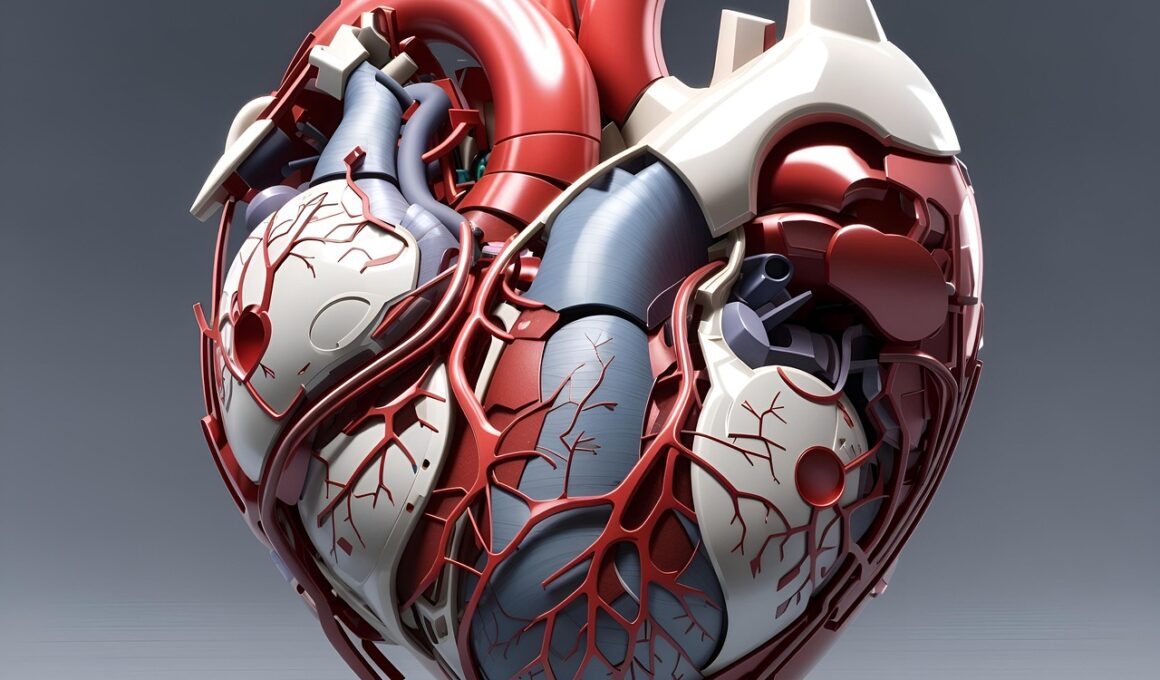Understanding Cardiovascular Fitness: A Beginner’s Guide
Cardiovascular fitness refers to the ability of the heart, lungs, and blood vessels to supply oxygen during sustained physical activity. It is a crucial aspect of overall health and fitness, influencing how effectively your body performs physical tasks. Engaging in activities that raise your heart rate can improve this fitness level. These activities include running, cycling, swimming, and aerobics, among others. Regular cardiovascular exercise helps strengthen the heart muscle, improve lung function, and increase the efficiency of your cardiovascular system. Additionally, it can lead to weight management by burning calories, which plays a vital role in maintaining a healthy lifestyle. To begin improving cardiovascular fitness, incorporate moderate to vigorous activities into your weekly routine. Aim for at least 150 minutes of moderate aerobic activity or 75 minutes of vigorous activity each week as recommended by health organizations. Mix different types of exercises to keep it interesting and avoid monotony. Gradually increasing the intensity of the workouts will also help in sustaining effort and fostering long-term improvement. Monitoring your progress through app-based trackers or fitness watches can provide motivation and accountability.
The Benefits of Cardiovascular Fitness
Enhancing cardiovascular fitness offers numerous benefits for both physical and mental health. Firstly, it helps reduce the risk of heart disease, hypertension, and stroke. Improved cardiovascular health strengthens your heart, enabling it to pump blood more efficiently throughout your body. Secondly, better cardiovascular fitness increases endurance, allowing individuals to engage in daily activities with ease. Whether you’re carrying groceries or playing with your kids, it becomes easier. Furthermore, participating in cardiovascular activities releases endorphins, which improve mood and reduce feelings of anxiety and depression. Studies indicate that regular cardiovascular exercise can lead to better sleep patterns as well, which is critical for overall well-being. In addition, engaging in these exercises can enhance brain health, increasing memory and cognitive function. Research has shown that aerobic fitness is linked to better academic performance and productivity in adults. Weight management is another significant benefit, as regular cardiovascular activity can help manage body weight and prevent obesity. Lastly, working on cardiovascular fitness also boosts immunity, helping your body fend off infections and chronic illnesses. Engaging in outdoor activities also allows you to connect with nature, further benefiting your mental state.
To reap the benefits of cardiovascular fitness effectively, consider implementing a structured plan that includes a variety of exercises. Start with aerobic exercises, such as brisk walking or jogging, and gradually integrate high-intensity interval training (HIIT) for enhanced results. HIIT involves alternating short bursts of intense activity with periods of rest or lower activity levels. This approach can significantly boost cardiovascular endurance in less time. Furthermore, strength training is complementary; it not only builds muscle but enhances overall body functionality. Activities like cycling or swimming provide low-impact alternatives, making them suitable for individuals with joint concerns. It is also crucial to incorporate rest days in your exercise regime to allow recovery and prevent injuries. Keeping hydrated and maintaining a balanced diet plays a supportive role in achieving cardiovascular fitness goals. Foods rich in omega-3 fatty acids, antioxidants, and fiber should be prioritized for sustained energy levels. Lastly, consult fitness professionals or trainers for personalized advice and strategies tailored to individual goals and health conditions. Developing a consistent workout schedule will foster discipline, making it easier to stick to your fitness journey.
Measuring Cardiovascular Fitness
Understanding how to measure cardiovascular fitness can inspire and guide your exercise journey. One common measurement is VO2 max, which calculates how efficiently your body utilizes oxygen during intense exercise. Although direct testing in a lab environment provides the most accurate results, several field tests can also approximate it. For instance, the Cooper 12-minute run test measures the distance you can cover within that time frame. Alternatively, cycle ergometers and step tests can also gauge cardiovascular endurance. Monitoring heart rate is another way; during exercise, taking your pulse can help determine whether your workout intensity corresponds to your fitness goals. Most apps and fitness trackers use heart rate zones to indicate optimal workout levels. Aim for 50-70% of your maximum heart rate for moderate workouts and 70-85% for vigorous sessions. Analyzing how easily your heart rate recovers after activity can further provide insights into your cardiovascular fitness level. The quicker your heart rate returns to its resting state, the better your cardiovascular endurance. Keeping track of progress through regular assessments enables individuals to understand trends and adjust their exercise routines accordingly.
In addition to official testing methods, subjective assessments play a vital role in evaluating cardiovascular fitness. Listening to your body during workouts can provide crucial feedback about stamina and endurance levels. Note changes in energy levels during activities or how quickly fatigue sets in. Keep a workout journal to document your exercises, noting perceived exertion, recovery times, and any physical reactions noted. This self-reporting method creates a clearer picture of your fitness levels. Other metrics such as pace, duration, and distance of workouts can improve motivation and goal-setting approaches. Involving fitness classes or group exercises offers an opportunity to meet like-minded individuals, enhancing social motivation. The fun, competitive aspects challenge your fitness while promoting commitment. Do remember, however, that building cardiovascular fitness may take time and patience. Setting realistic short-term and long-term goals helps sustain motivation throughout the fitness journey. Celebrate small achievements along the way to maintain enthusiasm. Each step toward improved fitness counts and leads to significant health benefits in the long run. Focus on the journey rather than just the destination for a fulfilling experience.
Common Misconceptions About Cardiovascular Fitness
Several misconceptions surround cardiovascular fitness, potentially hindering individuals from achieving their health goals. One prevalent belief is that only rigorous aerobic workouts are effective. In reality, even moderate activities like walking or gardening can improve cardiovascular health. Each person’s fitness level differs, making any form of movement beneficial. Another common misconception is thinking that cardiovascular fitness is solely about losing weight. While shedding pounds can be a fantastic goal, enhanced fitness also focuses on improving endurance and overall well-being. Additionally, some individuals believe they need extensive amounts of time for effective workouts. Short, intense sessions can offer excellent results when executed properly, making it easier to fit them into busy schedules. There’s also the myth that cardiovascular fitness is unattainable as people age. However, older adults can significantly improve their fitness through regular exercise, promoting longer, healthier lives. It’s crucial to emphasize that variety in workouts contributes significantly to sustained interest and prevents plateauing. Activities that you enjoy increase adherence to fitness plans. Remember, there is no one-size-fits-all approach; listen to your body and modify as needed to embrace a comprehensive fitness routine.
In conclusion, cardiovascular fitness remains a foundational component of overall wellness and health. It offers extensive benefits that enhance not only physical but also mental health. Engaging in regular aerobic activities can lead to significant improvements in endurance, energy levels, and overall quality of life. As you embark on your journey, remember the importance of finding activities you love, as enjoyment fuels consistency. Make cardiovascular exercise a fun part of your life by exploring different options, such as dance classes, hiking clubs, or cycling groups. These activities fulfill fitness goals while nurturing social connections. Monitoring your progress and celebrating achievements fosters motivation, rendering your efforts rewarding. Educating yourself about cardiovascular fitness allows you to combat misconceptions and adopt effective strategies. Finally, ensure you prioritize rest and recovery, nourishing your body, and allowing it to recharge. By embracing a balanced view of health that prioritizes not just fitness but joy in movement, you set yourself up for long-term success. Invest in a healthy lifestyle today, as it is never too late to begin prioritizing cardiovascular fitness for a vibrant future.



